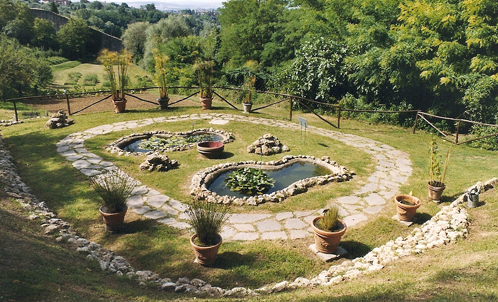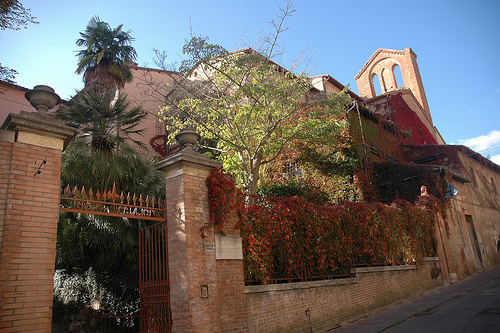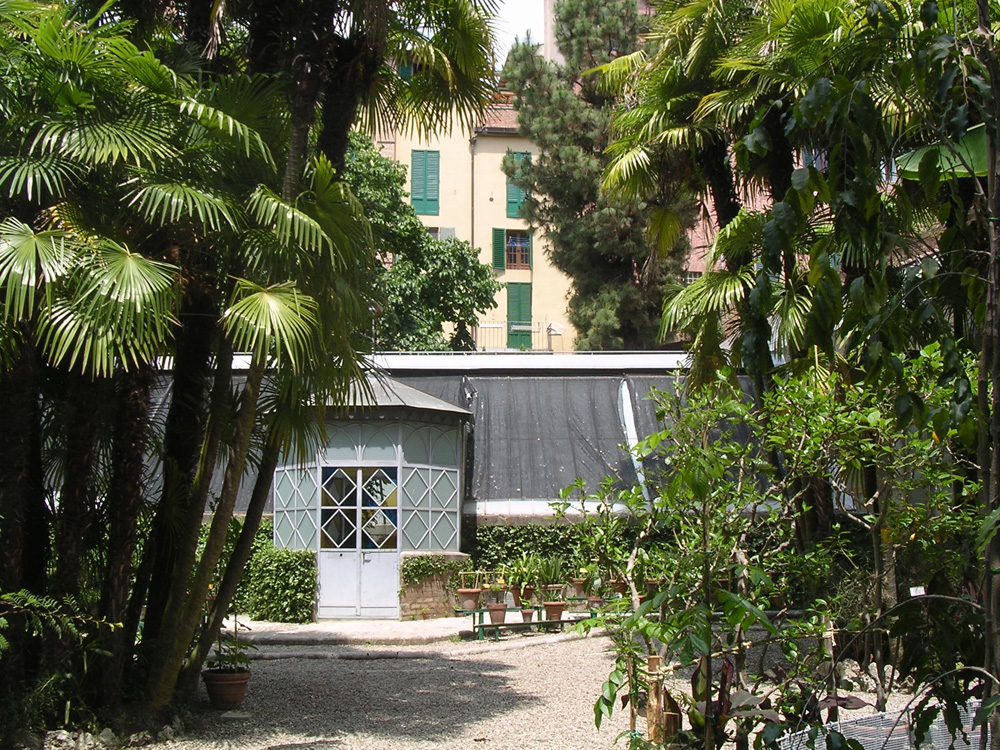
Siena University Botanical Garden
This post is also available in:
 Italiano (Italian)
Italiano (Italian)
The University Botanical Garden was artificially recreated in 1856 within the medieval walls of Siena. The origins of this facility, however, date back to 1588, when the University Chair of “the Simple” was established in Siena, as in Pisa and Florence (“Simple” were raw officinal herbs called back then). In the XIX century, the garden was enriched with several exotic plants still little known and coming from abroad. At the end of 1850, there were more than 3.000 plants, arranged according to the “Linnean system” and including many succulent species. Only in 1856, the garden was moved to its current location, as more space was badly needed. Since then, this beautiful facility has gradually become a more “European” garden, despite its huge original collections of exotic species. A Tepidarium has also been built for an open-ground succulent plant collection, as well as rocky, a garden featuring spontaneous orchids of central and southern Tuscany, a Felceto (fern area), and a lake.
The garden is located at altitudes between 918 and 1.148 ft above sea level, on sloping ground. Inside several XIX century flower beds the following species can be admired: Gymnosperms (seed plants without flowers and fruits) with arboreal habit, such as Taxus baccata, Ginkgo biloba, Sequoiadendron giganteum, Araucaria araucanae, many firs (Abies pinsapo, A. alba, Picea abies), and juniper (Juniperus sabina, J. communis).
Some other flowerbeds feature exotic arboreal Angiosperms, with large specimens, some of them quite ancient, both ornamental and fruit varieties such as Diospyros virginiana, Maclura pomifera – of American origin and with a particular subglobose fruit (3.93-5.5 inches in diameter), Gleditsia triacanthos – an American legume with large pendulous fruits, Cydonia oblonga – one of the oldest known fruit rosaceae and commonly called “quince”.
In the central part of the huge garden, there are indigenous plants typical of central-southern Tuscany, organized according to the coastal strip (Quercus ilex, Erica arborea, Phillyrea angustifolia, Myrtus communis, Smilax aspera, Lonicera implexa), the hilly area (Acer monspessulanum, Sorbus torminalis, Ostrya carpinifolia, Galanthus nivalis, Anemone nemorosa, Hepatica nobilis, and the mountain range (Fagus sylvatica, Castanea sativa, Acer lobelii).
Beyond the garden, there’s also a collection of spontaneous orchids from Tuscany.
Masonry tanks, small artificial lakes, ponds, and streams offer different aquatic environments. Then, there are four greenhouses (the ancient greenhouse built in 1875, the Tepidarium, the Limonaia, and the experimental facility), a rock garden – created at the end of the 1990s and hosting spontaneous species of central-southern Tuscany: they are abundant on steep and sloping areas in intensely grazed patches of land, as well as in degraded wooded territories.
Last but not least, there’s a Felceto which houses indigenous plants typical of humid and cool environments, such as ferns and filed horsetails.
This post is also available in:
 Italiano (Italian)
Italiano (Italian)
Contatti
Via P. A. Mattioli 4 - Siena(SI)
0577 235407
orto@unisi.it
http://www.museobotanico.unisi.it
Altre info
Dalle 8.00 alle 15.00 dal Lunedi al Venerdi; dalle 8.00 alle 12.30 il Sabato; domenica e festivi chiuso


